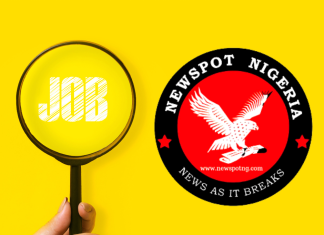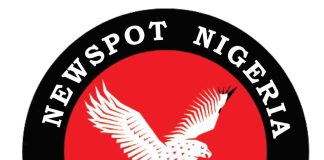Over the weekend, I had the incredible opportunity as keynote speaker to deliver a thought-provoking paper on “Diversity and Inclusion: The Key to Effective Leadership in the 21st Century” at the honorary doctorate degree awards ceremony of Myles Leadership University.
It was a powerful discussion that shed light on the significance of embracing diversity and fostering inclusion in leadership roles. In today’s ever-changing world, we must recognize the invaluable impact that diversity brings to the table and the positive influence it has on organizational success.
Below are the thoughts that I shared;
In the fast-paced and interconnected world of the 21st century, effective leadership requires more than just managerial skills and expertise. It demands a deep understanding and appreciation of diversity and inclusion. Embracing diversity and fostering inclusion within organizations is not only a moral imperative but also a strategic advantage. This article explores the profound impact of diversity and inclusion on leadership effectiveness and offers insights on how to embrace these principles in the modern era.
1. The Power of Diversity
Diversity encompasses the range of differences among individuals, including but not limited to race, ethnicity, gender, age, sexual orientation, physical abilities, religion, and socioeconomic background. Embracing diversity in leadership brings numerous benefits:
a. Enhanced Problem Solving and Innovation: Diverse teams with a variety of perspectives and experiences are more likely to generate innovative ideas and solutions. Different backgrounds and viewpoints can lead to more comprehensive problem-solving and foster creativity.
b. Expanded Market Reach: In an increasingly globalized world, diversity in leadership enables organizations to connect with diverse customer segments. Leaders who understand different cultures and perspectives can effectively navigate and tap into new markets.
c. Improved Decision Making: When leaders surround themselves with diverse voices, they gain access to a broader range of insights and ideas. This diversity of thought enhances decision-making processes and reduces blind spots.
2. The Essence of Inclusion
Inclusion complements diversity by creating an environment where every individual feels valued, respected, and empowered to contribute fully. Inclusion is the key to unlocking the potential that diversity offers:
a. Increased Employee Engagement and Productivity: Inclusive leaders foster a sense of belonging and psychological safety, which drives higher employee engagement and productivity. When individuals feel heard, valued, and appreciated, they are motivated to give their best.
b. Attraction and Retention of Top Talent: Inclusive organizations are magnets for diverse talent. When people perceive an organization as inclusive, they are more likely to join and remain committed to its mission. Inclusive leadership strengthens employee loyalty and reduces turnover.
c. Collaboration and Innovation: Inclusive leaders create an environment where diverse teams can collaborate effectively. By encouraging open dialogue, active listening, and the sharing of ideas, leaders foster a culture of innovation that harnesses the collective intelligence of the team.
3. Building an Inclusive Leadership Style
Becoming an inclusive leader requires intentional effort and ongoing commitment. Here are some strategies to cultivate an inclusive leadership style:
a. Self-Reflection and Awareness: Examine your own biases, assumptions, and privileges. Developing self-awareness is critical to understanding how your own perspectives may influence your leadership decisions.
b. Cultivate Empathy and Active Listening: Practice empathetic listening to understand the experiences, perspectives, and needs of others. Create space for diverse voices to be heard and valued.
c. Foster Psychological Safety: Create an environment where individuals feel safe to express their thoughts and ideas without fear of judgment or reprisal. Encourage healthy debate and constructive feedback.
d. Champion Diversity in Recruitment and Development: Actively seek out diverse talent and provide equal opportunities for growth and advancement. Challenge traditional recruitment and promotion practices to ensure a diverse talent pipeline.
e. Invest in Education and Training: Provide diversity and inclusion training for yourself and your team. Equip leaders and employees with the knowledge and skills needed to foster inclusive practices and cultural competence.
Here are some practical examples of steps leaders can take in embracing diversity and inclusion in their organizations
1. Employee Resource Groups
Many organizations have implemented Employee Resource Groups (ERGs) to support diversity and inclusion. ERGs are employee-led groups that bring together individuals with shared backgrounds, interests, or identities. For instance, a company may have an ERG for women or employees from different ethnic backgrounds. These groups provide a platform for employees to connect, share experiences, and contribute to the organization’s diversity and inclusion efforts. They can organize events, provide mentorship opportunities, and offer valuable insights to the leadership team.
2. Unconscious Bias Training
Unconscious biases can hinder diversity and inclusion efforts. To address this, leaders can implement unconscious bias training programs for employees. These trainings help individuals become aware of their unconscious biases and provide strategies to mitigate their impact. For instance, a workshop might include interactive exercises and case studies to highlight how biases can influence decision-making and offer techniques for making unbiased choices. This training helps create a more inclusive and fair workplace environment.
3.Supplier Diversity Initiatives
In addition to fostering diversity within the organization, leaders can promote diversity and inclusion through supplier diversity initiatives. This involves actively seeking out and partnering with diverse suppliers, such as minority-owned businesses, women-owned businesses, and businesses owned by individuals with disabilities. By diversifying their supply chain, organizations not only contribute to economic empowerment but also create opportunities for underrepresented groups to thrive and succeed.
4. Mentorship and Sponsorship Programs
Leaders can establish mentorship and sponsorship programs to support the career growth of individuals from diverse backgrounds. Mentors provide guidance, advice, and support to help mentees navigate their professional journeys. Sponsors, on the other hand, actively advocate for their protégés’ career advancement by leveraging their own influence and networks. These programs help break down barriers and create a more level playing field, ensuring that individuals from diverse backgrounds have equal access to opportunities for growth and development.
5. Employee Surveys and Feedback Mechanisms
To gauge the effectiveness of diversity and inclusion initiatives, leaders can implement employee surveys and feedback mechanisms. These tools allow employees to provide anonymous feedback, share their experiences, and suggest improvements. Leaders can analyze the feedback, identify trends, and take action to address concerns or implement new initiatives. Regular check-ins with employees demonstrate a commitment to creating an inclusive environment and provide insights for continuous improvement.
Conclusion
In the 21st century, effective leadership requires embracing diversity and fostering inclusion. By valuing and leveraging the power of diverse perspectives, leaders can drive innovation, enhance employee engagement, and create a culture of collaboration. Inclusive leadership not only benefits organizations but also contributes to a more equitable and just society. Embracing diversity and inclusion is key to effective leadership in the 21st century. By understanding the benefits of diversity and inclusion and taking practical steps to embrace it in their organizations, leaders can create a more engaged and productive workforce, better serve their customers, and stay ahead of the competition. By embracing diversity and inclusion, leaders can ensure that their organizations are equipped to thrive in today’s fast-paced and ever-changing global business environment.
Market Highlights
INTERBANK FOREX RATES 💴💰
US$GH¢ Buy 10.9580 Sell 10.9690
GB£GH¢ Buy 13.7194 Sell 13.7343
CHFGH¢ Buy 12.2462 Sell 12.2584
AUD$GH¢ Buy 7.3372 Sell 7.3465
CAD$GH¢ Buy 8.1209 Sell 8.1287
JP¥GH¢ Buy 0.0805 Sell 0.0806
NZDGH¢ Buy 6.8199 Sell 6.8287
ZARGH¢ Buy 0.5750 Sell 0.5755
EU€GH¢ Buy 11.9165 Sell 11.9273
CHN¥GH¢ Buy 1.5762 Sell 1.5769
GH¢CFA Buy 54.9963 Sell 55.0461
GH¢NG₦ Buy 42.1800 Sell 42.2630
CRYPTOCURRENCY MARKET
Bitcoin $27,080.14 🔻0.97%
Ethereum $1,811.84 🔻0.78%
Binance Coin $312.35 🔻0.69%
Ripple $0.4251 🔻1.19%
Cardano $0.3653 🔻1.81%
Dogecoin $0.07183 🔻1.55%
Polygon $0.8568 🔻1.41%
💵Bloomberg USDGHS Cross Rate – *11.2290* (YTD -🔺️10.54%)
💰STANBIC BANK FOREX RATES💵
US$GH¢ Buy 10.8000 Sell 11.8000
GB£GH¢ Buy 13.3920 Sell 14.8090
EU€GH¢ Buy 11.6640 Sell 12.9529
CH¥GH¢ Buy 1.5494 Sell 1.7077
🔼GSE DAILY GAINERS ➖ PRICE ➖ %CHANGE
UNIL ➡Gh¢5.28 🔼+10.00%
TOTAL ➡Gh¢6.43 🔼+0.16%
🔻GSE DAILY LOSERS ➖ PRICE ➖ %CHANGE
SOGEGH ➡Gh¢0.60 🔻-3.23%
〽Inflation rate in Ghana ➡ 41.20%
🏦Ghana Reference Rate ➡ 26.45%
✳Policy Rate in Ghana ➡ 29.50%
¶ TREASURY RATES💸
91 – Day Discount Rate 19.4381% Interest Rate 20.4309%
182 – Day Discount Rate 20.5969% Interest Rate 22.9616%
364 – Day Discount Rate 21.6246% Interest Rate 27.5911%
🛢Petroleum Products – Average Price
🏗Petrol – Gh¢12.64/ltr (YTD 🔺️+1.94%)
🛢Diesel – Gh¢12.64/ltr (YTD 🔽-13.42%)
⛽LPG – Gh¢12.40/kg (YTD-🔺️+34.78%)
🏧MARKET INDEXES
*Dow Jones Index🚂⛽ 33,348.60 +47.98 +0.14%
*S&P 500 🏦 4,136.28 +12.20 +0.30%
*Nasdaq Index📲💻 12,365.21 +80.47 +0.65%
* NYSE Composite Index 15,322.56 +76.20 +0.50%
*London FTSE 7,777.70 +23.08 +0.30%
*Germany DAX 15,917.24 +3.42 +0.02%
*Japan NIKKEI 225 29,626.34 +238.04 +0.81%
*Tokyo TOPIX Index 2,114.85 +18.46 +0.88%
*Hong Kong HANG SENG 19,971.13 +343.89 +1.75%
*Shanghai Shenzhen 300 3,998.89 +61.13 +1.55%
*S&P/ASX 200 Index 7,267.13 +10.48 +0.14%
*Bloomsberg EU 500 303.38 +0.84 +0.28%
*France CAC All-Tradable 5,533.64 +3.28 +0.06%
*Dubai DFM General Index 3,525.43 -33.66 -0.95%
*MOEX Russia Index 2,611.07 +45.90 +1.79%
*FTSE/JSE South Africa 72,918.31 -43.05 -0.06%
*Nairobi SE 20 Share 1,467.52 -4.69 -0.32%
*Nigeria SE Main 52,231.29 +16.67 +0.03%
*BBG EMEA World Index 209.49 -0.06 -0.03%
*GSE Composite Index 2,722.79 +1.62 +0.06%
*GSE Financial Index 1,720.27 -2.47 -0.14%
GSE INDEXES ⏸ 2023 YTD RETURNS%
*GSE Composite Index 2,722.79 🔼+11.41%
*GSE Financial Index 1,720.27 🔻-16.19%
🔼GSE 2023 GAINERS ➖ PRICE ➖ YTD%
BOPP ➡Gh¢14.11 🔼+84.44%
TOTAL ➡Gh¢6.43 🔼+60.75%
MTNGH ➡Gh¢1.26 🔼+43.18%
UNIL ➡Gh¢5.28 🔼+36.08%
TBL ➡Gh¢0.82 🔼+2.50%
🔻GSE 2023 LOSERS ➖ PRICE ➖ YTD%
FML ➡Gh¢1.00 🔻-66.67%
SOGEGH ➡Gh¢0.60 🔻-40.00%
SCB ➡Gh¢13.90 🔻-31.05%
GGBL ➡Gh¢1.50 🔻-26.83%
CAL ➡Gh¢0.50 🔻-23.08%
COMMODITIES MARKET
*Brent Crude USD/barrel⛽ 75.55 +1.38 +1.86%
*Natural Gas 🏭 USD/million BTUS 2.38 +0.11+4.81%
*Gold 👑 USD/troy ounce 2,022.70 +2.90
+0.14%
*Silver 💍 USD/troy ounce 24.29 +0.14 +0.57%
*Corn 🌽 USd/bushel 592.50 +6.25 +1.07%
*Cocoa 🍫 USD/metric ton 2,980.00 -6.00 -0.20%
*Coffee ☕ USd/pound 189.40 +6.55 +3.58%
*Sugar🎂 USd/pound 26.29 +0.07 +0.27%
*Lumber USD/1000 board feet 344.00 +5.00 +1.47%
Rubber USd/100kg 135.90 +0.60 +0.44%
Sources: Bank of Ghana, Bloomberg, GSE, Reuters, Ghanaweb, Doobia, BBC.
Mark G. Darko, Accra
Share your story or advertise with us: Whatsapp: +2347068606071 Email: info@newspotng.com















